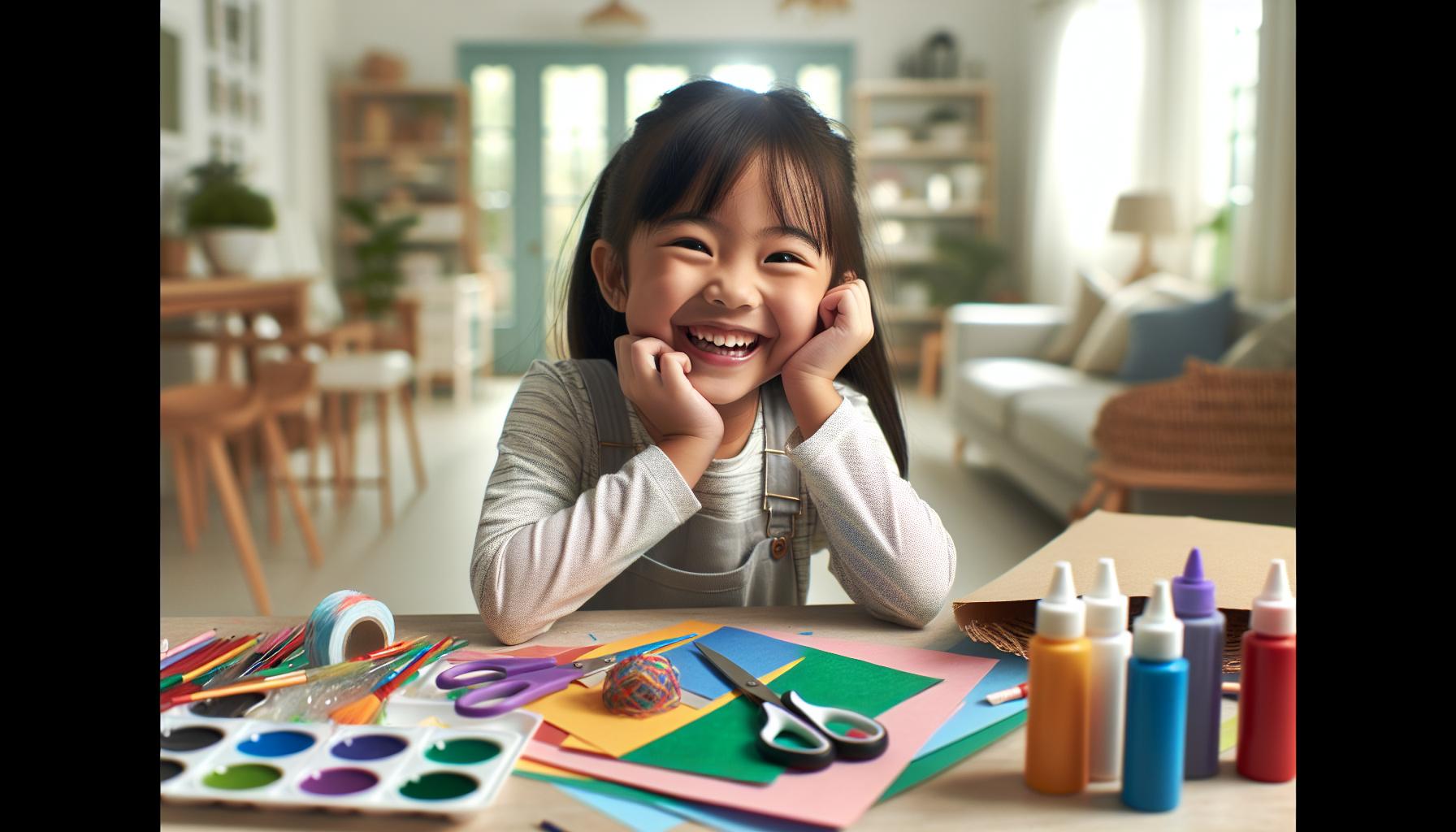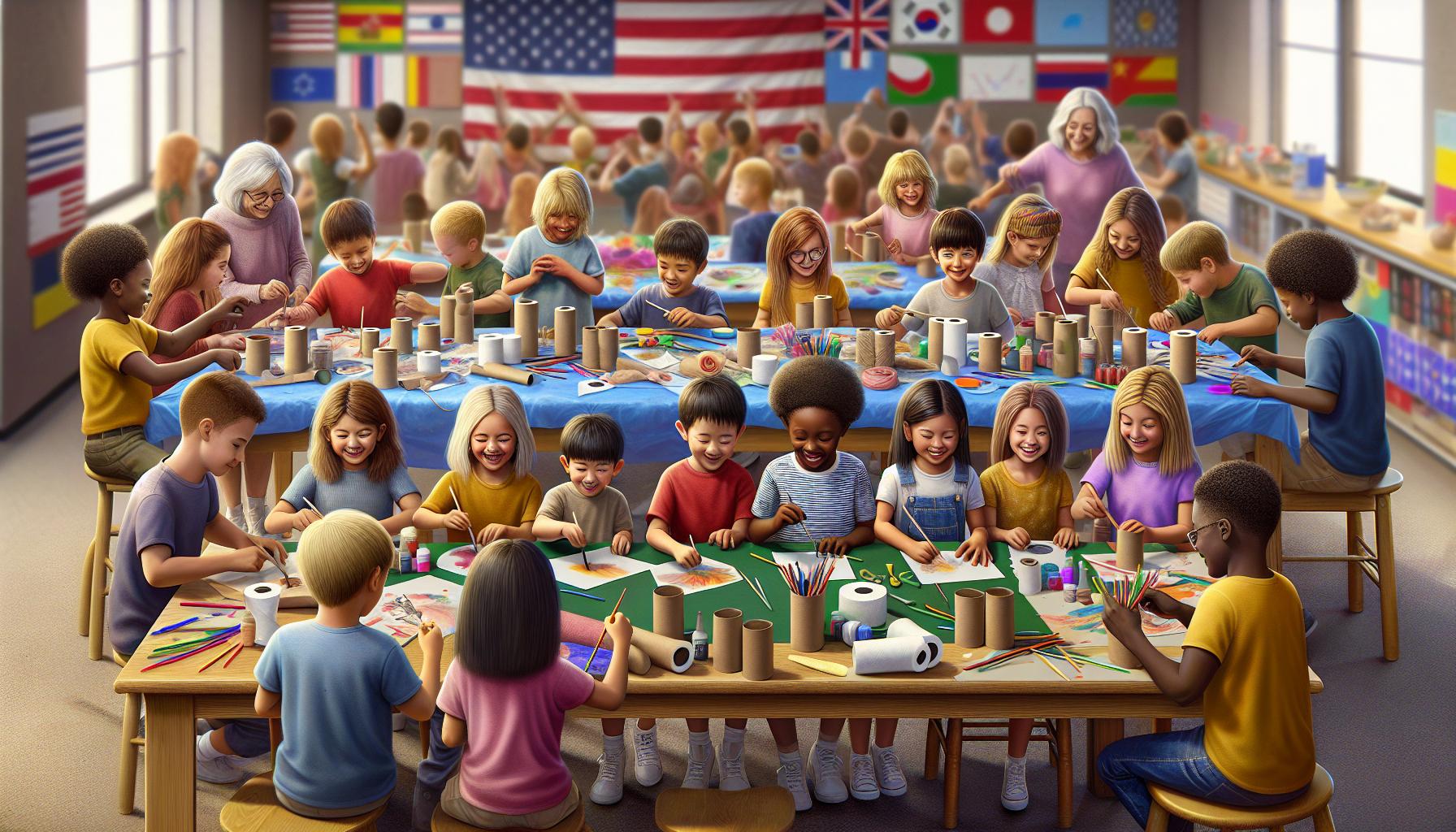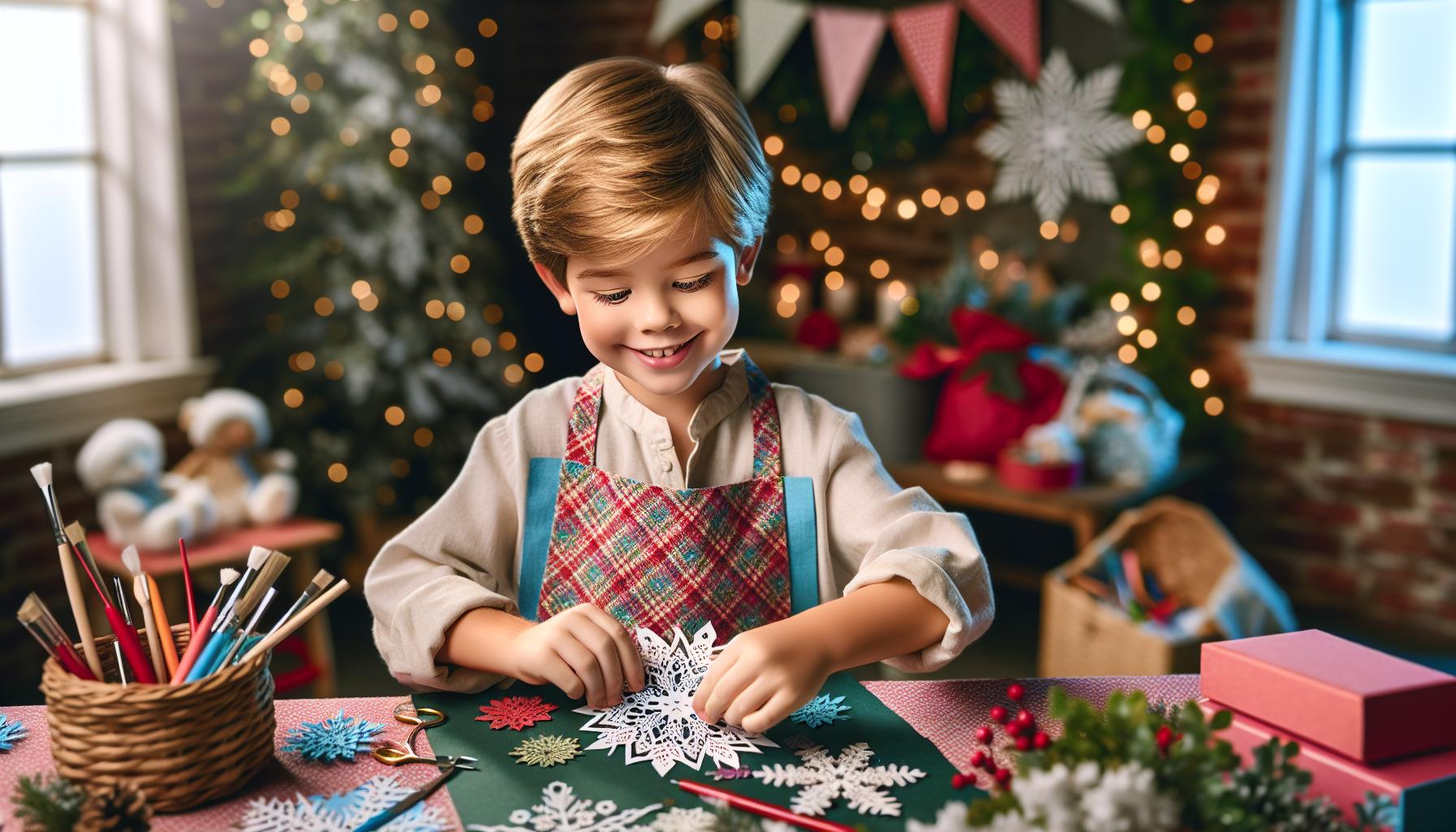Finding fun and educational activities for kids can sometimes feel like a daunting task, but easy DIY projects offer the perfect solution. Not only do they keep little hands busy, but they also spark creativity and teach practical skills. I’ve discovered that the best projects are those that require minimal supplies and supervision, making them ideal for busy parents like me.
From crafting whimsical paper animals to creating colorful homemade slime, these projects are designed to engage kids of all ages. They encourage imagination while subtly introducing concepts like problem-solving and critical thinking. Plus, the joy on a child’s face when they complete a project is truly priceless.
With a few simple materials and a touch of imagination, you can transform a rainy afternoon into a creative adventure. Whether you’re a seasoned DIY enthusiast or a beginner, these projects promise hours of fun and learning for both you and your little ones.
Key Takeaways
- DIY Projects Offer Fun & Learning: Easy DIY projects for kids are not only engaging but also foster creativity, problem-solving, and critical thinking skills through hands-on activities.
- Essential Tools & Materials: Basic supplies such as paper, glue, markers, and scissors are fundamental for successful DIY projects, encouraging children’s curiosity and creativity.
- Enhancement of Skills: These projects help enhance motor skills, dexterity, and cognitive abilities, while also promoting teamwork and independent problem-solving.
- Safety is Crucial: Ensuring a safe working environment with adult supervision and age-appropriate projects is essential to protect kids while fostering a productive and creative atmosphere.
- Seasonal & Thematic Projects: Integrating holiday or seasonal themes into DIY tasks increases excitement and context, allowing kids to explore creativity relevant to different times of the year.
Easy DIY Projects For Kids
DIY projects enhance a child’s creativity and cognitive development. By engaging in hands-on activities, kids learn to think outside the box and develop original ideas. For example, crafting paper animals fosters imaginative thinking by encouraging children to visualize and create unique characters.
Children improve problem-solving skills through these projects. Facing challenges, like determining how to construct a sturdy paper house, teaches kids to analyze situations and devise solutions. This analytical approach builds critical thinking ability over time.
Motor skills see significant enhancement as kids manipulate materials like glue, scissors, and paper. Handling these tools refines their dexterity and hand-eye coordination, which are essential for their growth and future academic tasks.
DIY projects foster a sense of responsibility and independence in children. Completing tasks independently boosts self-esteem and enables them to take charge of their actions. This empowerment translates to improved confidence and competence in various aspects of their lives.
These projects promote collaboration and teamwork when kids work together. Activities like building a group mosaic teach sharing, communication, and cooperation, which are essential skills for social interactions and group endeavors.
Essential Materials And Tools

When organizing easy DIY projects for kids, certain materials and tools become essential to the process. These items lay the foundation for creativity and learning.
Basic Supplies
- Paper: Construction paper and cardstock serve as versatile bases for crafts like origami animals and greeting cards.
- Glues and Adhesives: Glue sticks and liquid glue are vital for assembling pieces in projects such as collages and homemade ornaments.
- Scissors: Child-safe scissors allow for safe cutting of paper and fabric, crucial in projects like cutting out shapes or patterns.
- Markers and Crayons: These coloring tools let kids add vibrant details and personal touches to their creations.
- Paints: Washable paints work great for a variety of activities, including painting rocks and decorating picture frames.
- Paintbrushes: Different sizes of paintbrushes accommodate various painting projects and techniques.
- Rulers: Essential for measuring and creating straight lines in tasks like drawing and cutting.
- Hole Punches: Useful for creating holes for threading yarn or ribbon in projects like making mobiles.
- Stencils: Facilitate precise shapes and patterns, offering guidance in designing art projects.
Having these essential materials readily available encourages a child’s curiosity and provides the resources needed to dive into creative endeavors. With these tools, projects run smoothly, maximizing both fun and educational outcomes.
Fun And Educational Projects

Fun and educational DIY projects nurture creativity and learning in kids. These projects also utilize everyday materials, making them accessible and enjoyable at home.
Paper Plate Crafts
Kids love transforming paper plates into artistic creations. With some paint and a few other materials, they can make masks, animals, or even decorative wall art. For instance, creating a paper plate mask introduces kids to facial expressions and storytelling. Using simple supplies, they learn about colors and shapes.
Toilet Paper Roll Creations
Toilet paper rolls provide a fantastic base for imaginative projects. Kids can make binoculars, rockets, or small animals, helping them understand concepts like symmetry and balance. By crafting a rocket, children explore basic physics concepts as they decorate and assemble these fun creations. Each turn of a roll becomes a lesson in spatial awareness and design.
Simple Sewing Projects
Simple sewing projects enhance motor skills and patience. With basic stitches or pre-cut felt shapes, kids can craft bookmarks or small plush toys. This activity provides an introduction to textiles and material handling. Sewing a small plush toy, for example, teaches perseverance and creativity as they bring their ideas to life through fabric and thread.
Seasonal DIY Ideas

Exploring seasonal DIY projects engages kids in creative activities tied to the changing year. This adds excitement and context to their learning.
Holiday-Themed Crafts
Holiday-themed crafts spark creativity and joy. In December, paper snowflakes are a simple craft that teaches symmetry while decorating your home. For Halloween, making ghost garlands from tissue paper enhances cutting skills. Valentine’s Day provides an opportunity to create heart-shaped cards using construction paper and markers. These activities not only celebrate the season but also enhance kids’ fine motor abilities.
Outdoor Projects For Spring And Summer
Spring and summer offer perfect opportunities for outdoor projects. Building a birdhouse from recycled materials introduces kids to carpentry basics while encouraging wildlife interest. Treasure hunts, where kids decorate and plant clues, foster map-reading skills and creativity. Creating a garden-themed wind chime using shells, beads, and string combines art with nature, while honing hand-eye coordination. These projects encourage exploration and appreciation for the environment.
Safety Tips For DIY Projects
Monitoring supervision involves keeping a watchful eye while kids engage in DIY projects. Even with minimal supervision, there should always be a responsible adult present, ready to intervene if needed. Ensuring a safe environment consists of setting up a clean, organized workspace. This setup minimizes clutter and reduces potential accidents or injuries, which is crucial when kids use scissors or glue.
Selecting age-appropriate projects helps match the task’s complexity to the child’s abilities. Choose projects that align with a child’s developmental stage, ensuring both safety and learning. Filtration of materials means ensuring all supplies used are non-toxic. This selection includes non-toxic paints, child-safe glue, and materials safe for all ages, minimizing health risks.
Using protective gear enhances safety during complex projects. Items like safety glasses and gloves protect kids during projects involving sharp tools or chemicals. Implementing these basic safety tips allows children to focus on creativity without compromising on safety.
Encouraging Creativity In Kids
Fostering creativity in kids involves providing opportunities to explore and express their imagination through various DIY projects. By engaging in activities that challenge their creative thinking, they can learn to view the world from different perspectives. This develops their ability to innovate and problem-solve. For example, when crafting a castle from cardboard, kids can experiment with design and structure.
Offering diverse materials plays a critical role in this process. When children have access to a range of supplies, they explore textures and colors, enhancing their sensory experiences. Items like colorful paper, clay, and fabric allow them to merge ideas and create something unique. They might build a miniature garden using clay and leaves, combining natural elements with craft materials.
Encouragement from adults is equally important. Praising efforts, rather than just results, builds confidence and inspires kids to take creative risks. I find that when I celebrate their creative decisions, they become more willing to try new things. This nurtures an open mindset, crucial for long-term creative development.
Introducing concepts through storytelling also sparks creativity. When kids listen to or create their stories, they naturally engage in abstract thinking. Crafting storyboards or puppets from simple items encourages them to visualize narratives, enhancing their creative faculties.
Ultimately, creating an environment rich in possibilities and support empowers children to explore, imagine, and create, laying a strong foundation for lifelong creativity.
Fun and Learning for Kids
Exploring easy DIY projects for kids is a fantastic way to combine fun, learning, and creativity. These activities not only keep children engaged but also help them develop essential skills that will benefit them in the long run. By using simple materials and fostering a supportive environment, parents can turn ordinary days into extraordinary adventures. Encouraging kids to express their imagination through crafting and building promotes a sense of independence and boosts their confidence. So, gather those basic supplies and dive into the world of DIY projects with your kids. You’ll be amazed at how these simple activities can create lasting memories and inspire a lifelong love for creativity and learning.

